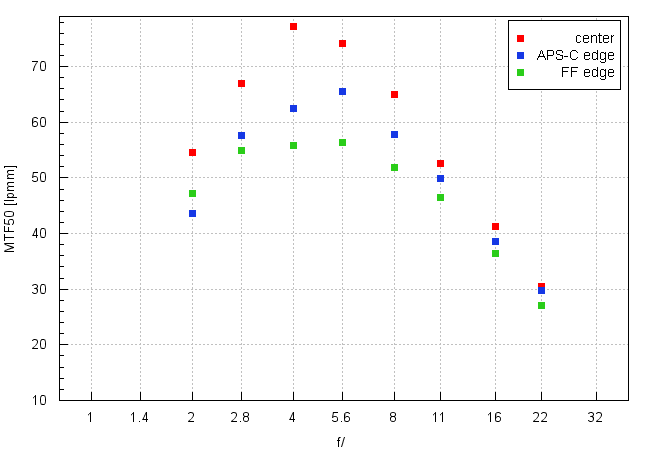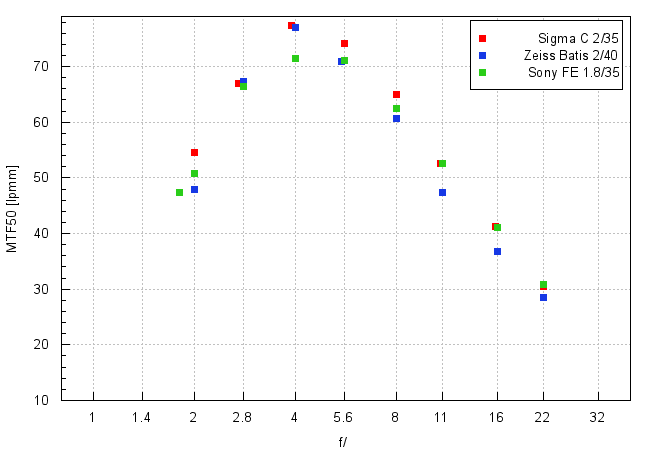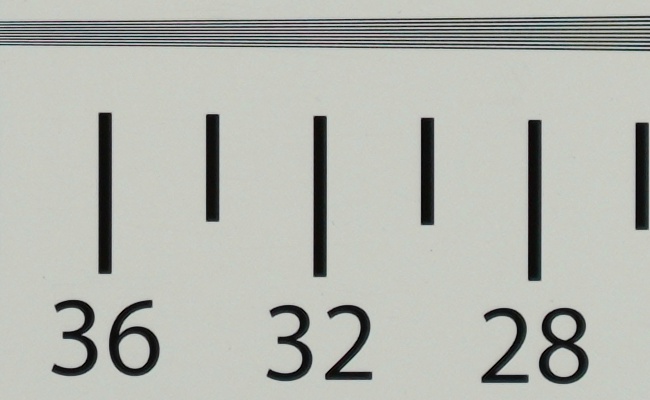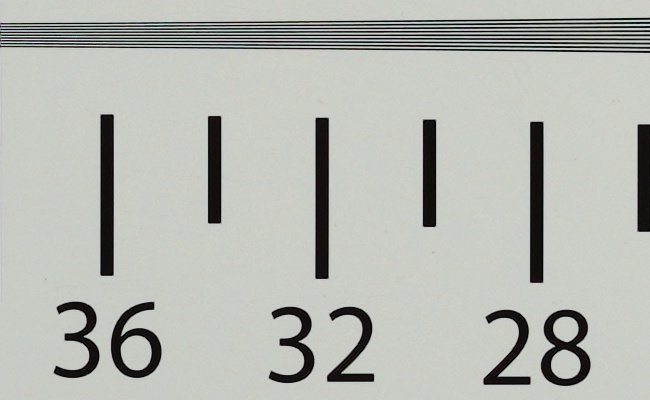Sigma C 35 mm f/2 DG DN
4. Image resolution
Let's check how the SigmaC 35 mm f/2 DG DN Macro compares – its results in the frame centre, on the edge of the APS-C sensor and on the edge of full frame presents a graph below.

Please Support UsIf you enjoy our reviews and articles, and you want us to continue our work please, support our website by donating through PayPal. The funds are going to be used for paying our editorial team, renting servers, and equipping our testing studio; only that way we will be able to continue providing you interesting content for free. |
- - - - - - - - - - - - - - - - - - - - - - - - - - - - - - - - - - - - - - - - - - - - - - - -
In the frame centre the Sigma fares splendidly well. Already at the maximum relative aperture you get a result of almost 55 lpmm – it means images of good quality. Then the resolution improves very quickly on stopping down, by f/4.0 reaching a sensational level of 77.3 lpmm.
In case of wide angle lenses designed for mirrorless cameras you often see a situation when the edge of the frame is weaker and lags significantly behind the results in the centre. Sigma avoided that. On the edge of the APS-C sensor maximum its results reach a very good level of almost 66 lpmm and on the edge of full frame the lens is able to get to 55-56 lpmm.
The situation at the maximum relative aperture is very interesting. The curvature of the field graph looks quite complex – as a result resolution the edge of the APS-C sensor is a bit weaker than the result on the edge of full frame; still, in both cases you land safely above the decency level so you shouldn't complain. Especially that already by f/2.8 the situation returns to normal and the edge of the APS-C sensor becomes sharper.
As a kind of interesting experiment we compared the results of the Sigma in the centre and the results of its rivals - the Zeiss Batis 40 mm f/2 CE and the Sony FE 35 MM F/1.8. An appropriate graph can be found below.

It is clear that near the maximum relative aperture the Sigma wins when it comes to the best image quality. By f/2.8 all three lenses fare almost identically well and by f/4.0 the Sigma and the Zeiss are a tad better than the Sony despite the fact that they are also slower aperture-wise. Out of these three lenses the Sigma presents itself the best.
At the end of this chapter, traditionally, we present crops taken from photos of our resolution testing chart saved in JPEG format alongside RAW files which we used for the analysis above.
| A7R III, JPEG, 35 mm, f/2.0 |
 |
| A7R III, JPEG, 35 mm, f/4.0 |
 |






